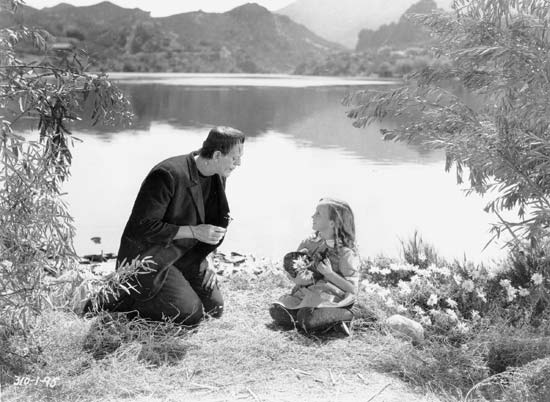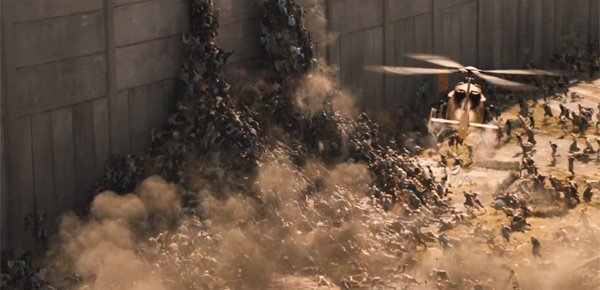While I was searching for information about how movie violence has increased over time for my Junior Theme, I found a very interesting
article that explored how the Catholic Church largely influenced film censorship throughout the early to mid-20th century. The Production Code Administration (PCA), chaired by a Catholic named William Hays, monitored Hollywood films of all genres, limiting the amounts of violence, sex, and "indecency" appearing on the big screen.
 |
| Monster and little girl in Frankenstein (1931) |
The PCA greatly censored James Whale's
Frankenstein (1931)
, which was viewed as "immoral" to many Catholics. Originally, the film included a scene in which the monster noticed a young girl tossing flowers onto a pond. He joined in, watching the flowers float atop the water. The monster then suddenly threw the little girl into the pond, hoping to see her float along the surface like all the beautiful flowers. When the girl drowned, the monster ran away into the forest, mortified. The PCA became very upset that this scene was revealing innocence in the monster. It ordered that much of the scene be removed. The edited version of
Frankenstein only showed the monster reaching for the young girl before the scene cut to the girl's father carrying her body through the village, her stockings around her ankles. This scene depicted no ounce of innocence in the monster; rather, it caused the viewer to believe that the monster intentionally drowned the young girl. This censored version of
Frankenstein remained in circulation for 40 years.
I can't believe it took 40 years for the original version of
Frankenstein to be released. The PCA managed to limit not only the violent drowning of the young girl from the screen, but also the innocent intentions of the monster. Without the scene depicting the monster's mortification after accidentally drowning the girl, the PCA was able to convince the audience that the monster was evil without any backstory. Today, the PCA and the Catholic Church no longer censor films. The
MPAA rating system, consisting of G, PG, PG-13, R, and NC-17 ratings replaced the PCA back in 1968. I wonder if the fact that
America has become a less religious place factored into the elimination of film censorship. Nevertheless, without the PCA in effect, more violence is definitely appearing on the big screen than ever before. The downfall of the PCA certainly seemed to contribute to the increase in movie violence over time.


